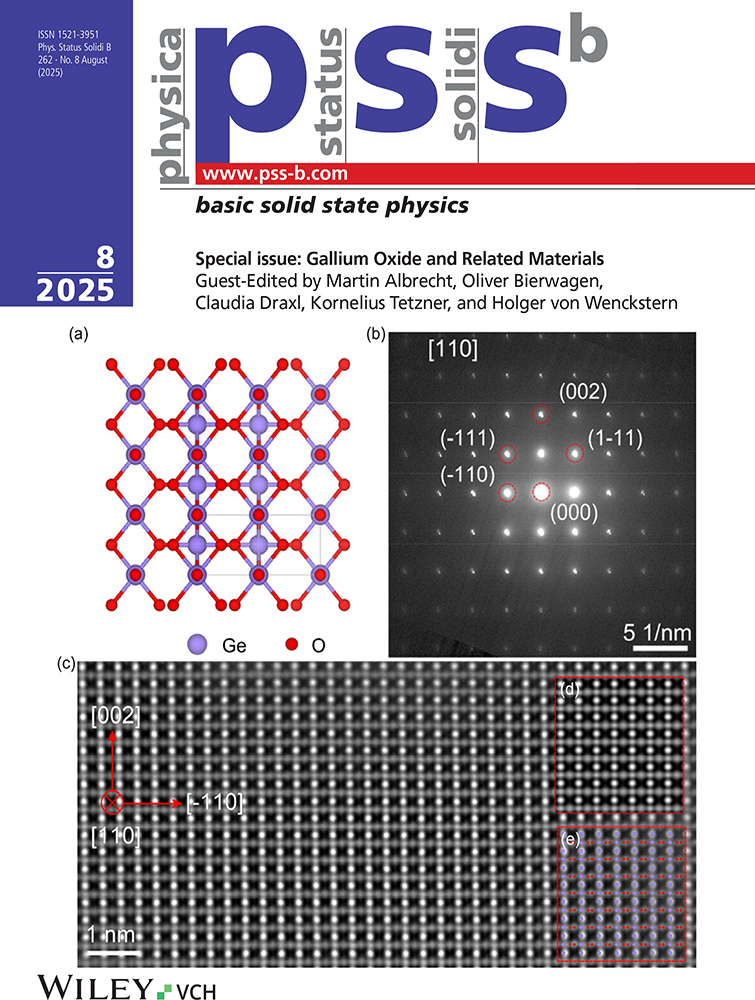Anisotropic g-Factor of the Conduction Electrons in Bi2Te3
Abstract
enShubnikov-de Haas investigations were performed on n-type Bi2Te3 in the concentration range from 2 × 1017 up to 2 × 1019 cm−3, at temperatures between 1.6 and 4.2 K. Magnetic fields up to 15 T induction were supplied by a superconducting coil (10 T) and a Bitter-type magnet (15 T). In contrast to a commonly almost isotropic ratio of spin-splitting to cyclotron-splitting in semiconductors, this property shows an anisotropy ratio of more than 20 in n-Bi2Te3. With knowledge of the electronic mass parameters of the lowest conduction band the angular variation and energy dependence of the corresponding g-factors were obtained, where the magnitude and sign (g > 0) can he determined. The orbital part of the g-factor is considerably large along two of the principal axes of the Fermi surface ellipsoids, but completely vanishes along the third principal axis. Hence the g-factor essen-rially describes an elliptic disc, the longest principal axis (g′2) tilted by an angle ϑ0 = 33.5° relative to the bisectrix axis within the mirror plane, while the second principal axis (g′1) is parallel to the binary axis. Perpendicular to this plane g′3 ≈ 2 is about an order of magnitude smaller. Values of gmc/(2mo) ≷ 1 may only be explained in a model of more than two interacting energy bands, where additional valence and conduction bands have to be tegarded.
Abstract
deShubnikov-de Haas-Untersuchungen wurden an n-Bi2Te3 im Konzentrationsbereich von 2 × 1017 bis 2 × 1019 cm−3 bei Temperaturen zwischen 1,6 und 4,2 K durchgeführt. Magnet-felder mit Flußdichten bis zu 15 T wurden mit einer Supraleitungsspule (10 T) und einem Bitter-Magneten (15 T) erzeugt. Im Gegensatz zu einem im allgemeinen nahezu isotropen Verhältnis von Spin- zu Zyklotron-Aufspaltung in Halbleitern zeigt diese Eigenschaft in n-Bi2Te3 ein Anisotropieverhältnis von über 20. Mit der Kenntnis der elektronischen Massenparameter im energetisch tiefsten Leitungsband wird die Energie- und Winkel-abhängigkeit der entsprechenden g-Faktoren erhalten, -wobei Größe und Vorzeichen (g > 0) bestimmt werden. Der Bahn-Anteil zum g-Faktor ist längs zweier der drei Hauptachsen der Fermikörper-Ellipsoide beträchtlich, verschwindet jedoeh vollständig parallel zur dritten Hauptachse. Daher beschreibt der g-Faktor angenähert eine elliptische Scheibe, deren größte Hauptachse (g′2) in der Spiegelebene um einen Winkel ϑ0 = 33,5° gegen die Bisektrix-Achse geneigt ist, während die zweite (g′1) parallel zur binären Achse verläuft. Senkrecht zu dieser Ebene ist g′3 ≈ 2 etwa um eine Größenordnung kleiner. Werte für gmc/(2m0) ≷ 1 können nur in einem Modell von mehr als zwei wechselwirkenden Energiebändern erklärt werden, wobei zusätzliche Valenz- und Leitungsbänder berücksichtigt werden müssen.




